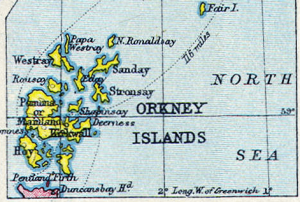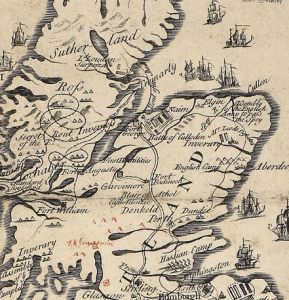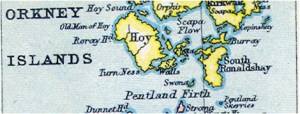January 29 Scots Book of Days
January 29 1487 John Drummond, 1st Lord Drummond (died 1519) 9th knight in a row was raised to the peerage by the title of Lord Drummond,
Drummond Crest: On a crest coronet Or, a goshhawk wings displayed Proper, armed and belled Or, jessed Gules. Motto: VIRTUTEM CORONAT HONOS. [from Latin: “Honour crowns virtue”]. Badge: holly, or Wild thyme Chief: John Eric Drummond, 18th Earl of Perth
Drummond of Cargill Stubhall Perth 8th c 2 Hamilton2 Stewart2 miller2 Simmons 2 Choate Isaac
1488 John Hay, 1st Lord Hay of Yester (c. 1450–1508) ancestor of the Marquesses of Tweeddale. John was created a Lord of Parliament on 29 January 1488 by James III of Scotland. John was born in Peebleshire, the son of Sir David Hay of Locherworth, Peebleshire, and later Yester in Haddingtonshire (d. c. 1478) by his wife Elizabeth (b. c. 1400), daughter of George Douglas, 1st Earl of Angus (1370–1402) by Princess Mary Stewart (d. before 1458), daughter of Robert III, King of Scots.
1599 never happened in Scotland. Think of all the calendars which had to be reprinted? And thank ye notes with the unknown date? There was no January 1st 1599 to March 24th of the year 1599 in Scotland. New Year’s Day began from 1600. The Scottish year 1599 was 10 months from March 25th to December 31st. Scotland and England kept different calendars (at least from January to March 24) for the next century and a half For the previous 15 centuries, from the time of Julius Ceasar, the new year began with the Spring Equinox, or March 25th, called Lady day in England. Hence September was the 7th month from March, from the Latin Septiem for seven. October the 8th month from the Latin octo for eight, November the 9th month from the Latin Novem for nine. And December from the Latin Decem for 10, or the 10th month of the year. . From 1155 to 1751 England and its colonies New Year began on 25 March and begin January 1 as start of year in 1752.
1689 Convention Parliament resolved that England was a Protestant Kingdom and only a Protestant could be King, thus disinheriting a Catholic claimant.
1737 – George Hamilton, 1st Earl of Orkney, died, British soldier (b. 1666). In 1704, Orkney was promoted to lieutenant general. At the Battle of Blenheim, Orkney led the final assault on the village of Blenheim, receiving the surrender of its French defenders. At the Battle of Ramillies, Orkney led the pursuit of the defeated French, and he played a major role at the Battle of Oudenarde. He was installed as Governor of Edinburgh Castle, made a Lord of the Bedchamber to George I, and was Governor of Virginia in 1714, but appears never to have visited the colony. He served as a Scottish Representative Peer in six parliaments from 1707 to 1736, and was the Lord Lieutenant of Lanarkshire.
 The 1st Earl of Orkney, Scottish Army until 1707. The first British Army officer to be promoted to the rank of Field Marshal. Lord George Douglas-Hamilton was born at Hamilton Palace, the fifth son of Anne Hamilton, 3rd Duchess of Hamilton and William Douglas, Earl of Selkirk. He was first trained by his uncles, Lord Dumbarton, Lord James Douglas, and Lord Angus, in military service in the 1st Regiment of Foot (then known as His Majesty’s Royal Regiment of Foot).
The 1st Earl of Orkney, Scottish Army until 1707. The first British Army officer to be promoted to the rank of Field Marshal. Lord George Douglas-Hamilton was born at Hamilton Palace, the fifth son of Anne Hamilton, 3rd Duchess of Hamilton and William Douglas, Earl of Selkirk. He was first trained by his uncles, Lord Dumbarton, Lord James Douglas, and Lord Angus, in military service in the 1st Regiment of Foot (then known as His Majesty’s Royal Regiment of Foot).
Orkney Is, Norse, Pentland Firth, Caithness, Kirkwall, Turn Ness, Hoy, Burray,
 Orkney Islands, Pentland Firth, Papa Westray, N. Ronaldsay, Sanday, Stronsay, Eda, Shapinsay, Decryless, Kirkwall, Hoy, Stromnes, Long W. of Greenwich 1 degree, 2 degree.
Orkney Islands, Pentland Firth, Papa Westray, N. Ronaldsay, Sanday, Stronsay, Eda, Shapinsay, Decryless, Kirkwall, Hoy, Stromnes, Long W. of Greenwich 1 degree, 2 degree.
1742 sometime this year. In his System of Heraldry, Speculative and Practical: with the True Art of Blazen, according to the Most approved Heralds in Europe, Vol. II, appendix to Part IV P. 42, published in 1742, Alexander Nisbet writes: ‘’I have met with an Account of a good auld Family of the Sirname of Millar of Temple and Killoch, in the Sheriffdom of Air, and Parish of Ochiltree, one of whom, Andrew Miller of Temple, matched with Anne Stewart, Daughter of Andrew Lord Ochiltree, about the time of the Reformation, [1560] by whom he had Andrew Millar of Temple, who married Elizabeth Lockhart, Daughter to Lockhart of Bar: she bore him two sons, Mr. Andrew, Henry, and a Daughter, Mary.’’ (Ministers were always called Mr.) This Andrew Miller of Temple and Killoch in Ayrshire is the earliest member of your Miller line to be consecutively verifiable; from the mid-l6th century on, the succession is clear. Your descent is through: Andrew Millar I of Temple and Killoch; Andrew Millar II of Temple and Killoch; the Rev. Andrew Millar of Alloway and Girvan; the Rev. Robert Millar of Ochiltree; the Rev. Robert Miller of St. Quivox; and his son Robert Miller who emigrated to South Carolina in the mid-l8th century. YYYr.
Lockhart of Bar 1297 2Miller 2Simmons 2Choate 2Sorensen
1746 [Scotland’s calendar.] The Prince at Bannockburn. Lord George Murray and the Highland chiefs at Falkirk sent a letter to the Prince, requesting him to retire to the Highlands as the army through sickness and desertion was not fit to meet the Duke of Cumberland. To this course the Prince most reluctantly agreed. Because the short lived uprising occurred in the winter, in England the year was still 1745, and the battles became known as the ’45.
 Highlands –south lanarkshire – Florida Illinois Indiana Iowa, Kansas, Nebraska, New York, Ohio, Tennessee, Texas.
Highlands –south lanarkshire – Florida Illinois Indiana Iowa, Kansas, Nebraska, New York, Ohio, Tennessee, Texas.
1751 did not occur in England, Ireland, British North America, and British colonies, as 1751 only had 282 days due to the Calendar Act of 1750. As a result of the Act, Scotland adopted the Gregorian calendar in 1752. Provision 6 (Times of Payment of Rents, Annuities) of the Act stipulated that monthly or yearly payments would not become due until the dates that they originally would have in the Julian calendar, or in the words of the Act “[Times of Payment of Rents, Annuities] at and upon the same respective natural days and times as the same should and ought to have been payable or made or would have happened in case this Act had not been made”
1754 sometime this year. Seven Years War (French and Indian War.
1762 Giuseppe Nicolini (29 January 1762 – 18 December 1842) was an Italian composer who wrote at least 45 operas, including Mary Queen of Scots.
1773 sometime this year. University of St Andrews. Samuel Johnson visited the university which barely had 100 pupils. The poverty of Scotland also damaged St. Andrews, as few were able to patronize the university and its colleges -state support being improbable- and the income these ones got was scarce. Hence, Samuel Johnson’s depiction of St. Andrews as a place of quiet decadence. Founded 1410 when James Kennedy was Bishop of St Andrews and founder of Scotland’s first university.
1843 William McKinley (January 29, 1843 – September 14, 1901) was the 25th President of the United States (1897–1901).
The McKinley clan arrived in Pennsylvania in the 1740s as part of a large migration of Scots. McKinley’s great-grandfather David McKinley, a veteran of the American Revolution, settled in Ohio in the 1790s.
At least twenty three presidents of the United States have some Scottish ancestry, although the extent of this varies. Ronald Reagan’s great grandfather was a Scot and Woodrow Wilson’s maternal grandparents were both Scots.
1861 Kansas becomes a state. Scottish names include- (Wikipedia)
Athol (Atholl), Logan County, Scott County
1869 Kenneth Douglas McKellar (January 29, 1869 – October 25, 1957) was an American politician from Tennessee who served as a United States Representative from 1911 until 1917 and as a United States Senator from 1917 until 1953.
1927 The Glen collection of Scottish Music. Presented by Lady Dorothea Nuggles Brise to the National Library of Scotland in memory of her brother Major Lord George Stewart Murray, Black Watch, killed in action in France in 1914. 28th January 1927.
https://archive.org/details/scotishminstrels00smit 352 pages.
The Scotish minstrel : a selection from the vocal melodies of Scotland, ancient and modern (1821) printed the Bonnie Banks O’Loch Lomond, for the Piano Forte.
Lyrics chorus – Oh! ye’ll take the high road and I’ll take the low road, And I’ll be in Scotland afore ye;
But me and my true love Will never meet again
On the bonnie, bonnie banks of Loch Lomond.
1986 Air Force recovery ships seek debris from Challenger in the Atlantic coast. Capsule will be recovered in tact.
Disclaimer:
Utah Standard News depends on the support of readers like you.
Good Journalism requires time, expertise, passion and money. We know you appreciate the coverage here. Please help us to continue as an alternative news website by becoming a subscriber or making a donation. To learn more about our subscription options or make a donation, click here.
To Advertise on UtahStandardNews.com, please contact us at: ed@utahstandardnews.com.





Comments - No Responses to “January 29 Scots Book of Days”
Sure is empty down here...